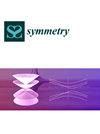PointNAC: Copula-Based Point Cloud Semantic Segmentation Network
IF 2.2
3区 综合性期刊
Q2 MULTIDISCIPLINARY SCIENCES
引用次数: 0
Abstract
Three-dimensional point cloud data generally contain complex scene information and diversified category structures. Existing point cloud semantic segmentation networks tend to learn feature information between sampled center points and their neighboring points, while ignoring the scale and structural information of the spatial context of the sampled center points. To address these issues, this paper introduces PointNAC (PointNet based on normal vector and attention copula feature enhancement), a network designed for point cloud semantic segmentation in large-scale complex scenes, which consists of the following two main modules: (1) The local stereoscopic feature-encoding module: this feature-encoding process incorporates distance, normal vectors, and angles calculated based on the cosine theorem, enabling the network to learn not only the spatial positional information of the point cloud but also the spatial scale and geometric structure; and (2) the copula-based similarity feature enhancement module. Based on the stereoscopic feature information, this module analyzes the correlation among points in the local neighborhood. It enhances the features of positively correlated points while leaving the features of negatively correlated points unchanged. By combining these enhancements, it effectively enhances the feature saliency within the same class and the feature distinctiveness between different classes. The experimental results show that PointNAC achieved an overall accuracy (OA) of 90.9% and a mean intersection over union (MIoU) of 67.4% on the S3DIS dataset. And on the Vaihingen dataset, PointNAC achieved an overall accuracy (OA) of 85.9% and an average F1 score of 70.6%. Compared to the segmentation results of other network models on public datasets, our algorithm demonstrates good generalization and segmentation capabilities.PointNAC:基于copula的点云语义分割网络
三维点云数据通常包含复杂的场景信息和多样化的类别结构。现有的点云语义分割网络倾向于学习采样中心点与其相邻点之间的特征信息,而忽略了采样中心点空间上下文的尺度和结构信息。为了解决这些问题,本文引入了PointNAC(基于法向量和注意copula特征增强的PointNet),这是一种针对大规模复杂场景下点云语义分割的网络,它包括以下两个主要模块:(1)局部立体特征编码模块:该特征编码过程结合了基于余弦定理计算的距离、法向量和角度,使网络不仅可以学习点云的空间位置信息,还可以学习点云的空间尺度和几何结构;(2)基于copula的相似特征增强模块。该模块基于立体特征信息,分析局部邻域内点之间的相关性。它增强了正相关点的特征,而保持了负相关点的特征不变。通过结合这些增强,有效地增强了同一类内特征的显著性和不同类之间特征的显著性。实验结果表明,PointNAC在S3DIS数据集上的总体准确率(OA)为90.9%,平均交联率(MIoU)为67.4%。在Vaihingen数据集上,PointNAC的总体准确率(OA)为85.9%,平均F1分数为70.6%。与其他网络模型在公共数据集上的分割结果相比,我们的算法显示出良好的泛化和分割能力。
本文章由计算机程序翻译,如有差异,请以英文原文为准。
求助全文
约1分钟内获得全文
求助全文
来源期刊

Symmetry-Basel
MULTIDISCIPLINARY SCIENCES-
CiteScore
5.40
自引率
11.10%
发文量
2276
审稿时长
14.88 days
期刊介绍:
Symmetry (ISSN 2073-8994), an international and interdisciplinary scientific journal, publishes reviews, regular research papers and short notes. Our aim is to encourage scientists to publish their experimental and theoretical research in as much detail as possible. There is no restriction on the length of the papers. Full experimental and/or methodical details must be provided, so that results can be reproduced.
 求助内容:
求助内容: 应助结果提醒方式:
应助结果提醒方式:


